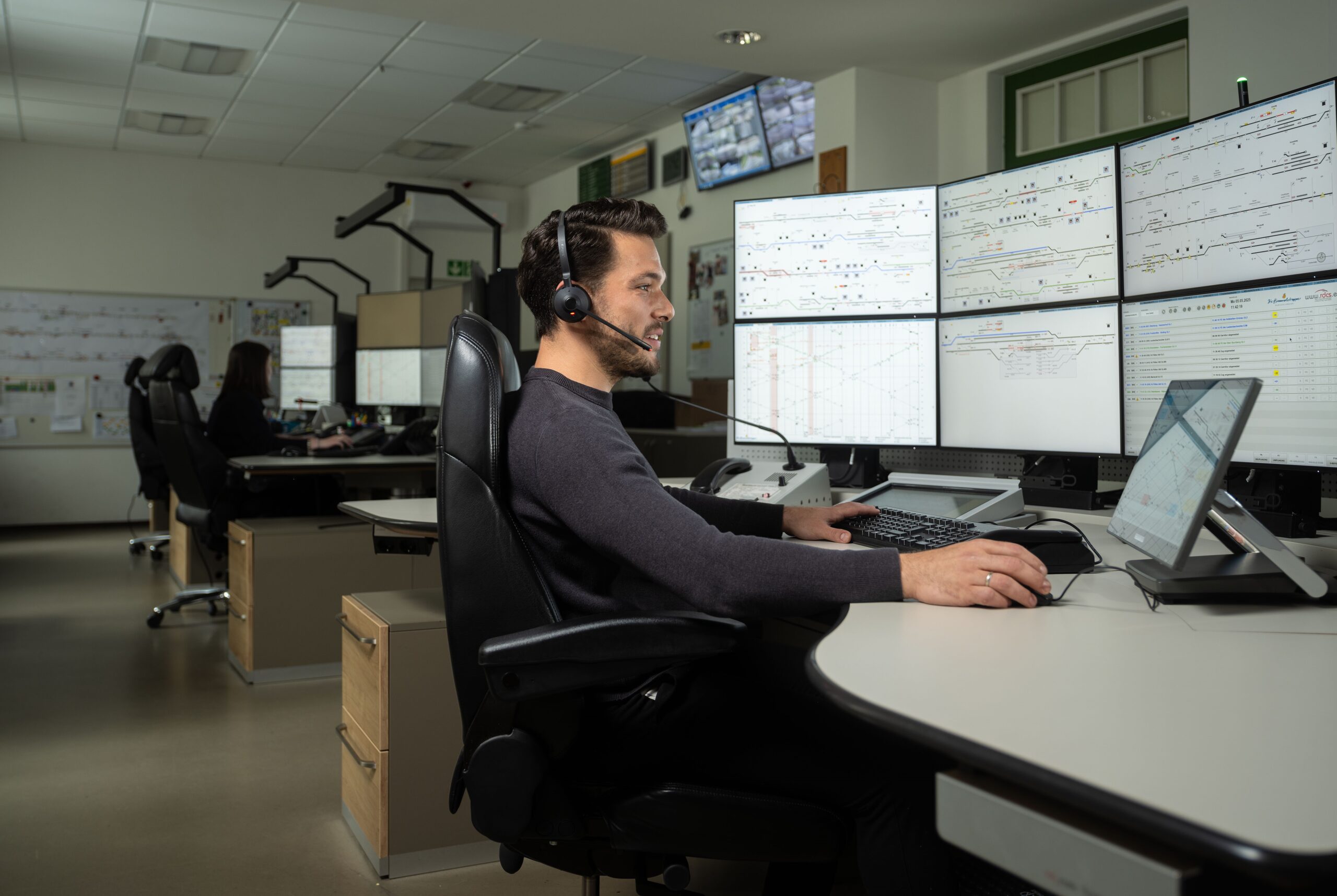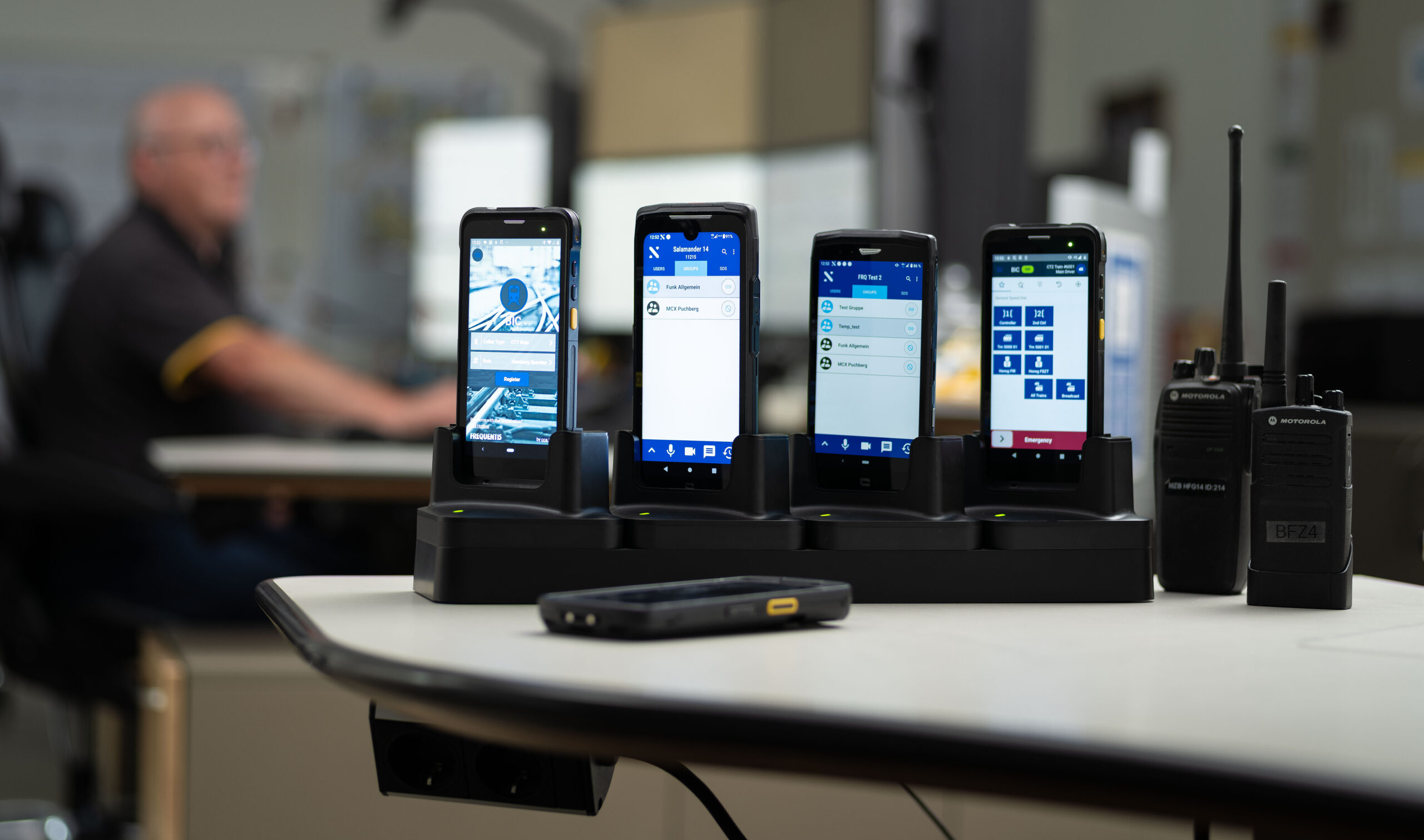In times where technological evolution is constant and the need for adaptability is more critical than ever, Frequentis as the global market leader for GSM-R dispatcher solutions, has recently introduced its Operation Communication Manager (OCM).

Dispatcher at work in rail control centre Laubenbachmühle
© Frequentis
Markus Myslivec, Head of Public Transport Solutions at Frequentis gives insights into the solution and how Frequentis contributes to the digital transformation of railway communication.
Railway-News: What makes the Operations Communication Manager (OCM) a novelty and how does it support major railways globally?
Markus Myslivec: With OCM, we are providing railway operators with a solution that bridges current technology with future demands. OCM is a hardware- independent, web-based application, ensuring compatibility with various devices, including desktops, tablets and smartphones. It supports both the existing GSM-R system and the Future Railway Mobile Communication System (FRMCS), making it a truly future-proof solution with full backward compatibility.
RN: What makes it special compared to traditional systems?
MM: Traditional railway communication systems often have rigid structures that limit adaptability. OCM, on the other hand, offers a customisable user interface with the OCM layout editor. Operators can configure layouts, themes and functionalities to match their workflow, resulting in a more intuitive and customer specific HMI.
RN: How does this enhance operational efficiency for railway operators?
MM: The OCM streamlines operations by offering a high degree of user accessibility and security. It integrates with identity and access management (IAM) systems, ensuring only authorised personnel can access critical communication channels. Additionally, its widget-based system allows operators to integrate GIS mapping, CCTV feeds and real-time notifications, improving situational awareness and decision-making.
RN: Frequentis is also contributing to the modernisation of railway communication through various projects beyond OCM. Can you mention one?
MM: Sure, most recently in our collaboration with Lower Austrian Transport Company (NÖVOG), a mission-critical services (MCX) solution was implemented for Schneebergbahn, a historic tourist railway. This project focused on ensuring secure and seamless communication over public networks, replacing an aging system with a more advanced, future-ready alternative. The end-to-end solution included applications for mobile devices, dispatcher workstations and backend infrastructure, all based on the 3GPP standard for mission-critical services.

Adaptable OCM user interface on various devices
© Frequentis
RN: In what ways does this expand digital rail communication and support them on their route to FRMCS?
MM: The NÖVOG project showcases Frequentis’ broader capability in developing and integrating mission-critical communication infrastructure for railway operations of varying scale. It also highlights how scalable, IP-based technologies can be successfully deployed in real-world environments – including remote and mountainous terrain – to improve both safety and operational.
Philipp Hammerl, Head of Technical Operations Management, Niederösterreichische Verkehrsorganisationsgesellschaft (NÖVOG), said:
This is the first time ever that an MCX solution is implemented exclusively for railway operations in Austria. The new communication solution enhances our operational efficiency and revolutionises the way we manage critical communication tasks. We are thrilled to collaborate with Frequentis on this lighthouse project.
This article first appeared in the Railway-News Magazine Issue 2 2025. Download a PDF version here.
Tags
Products & Services
